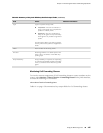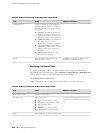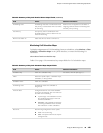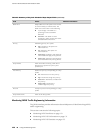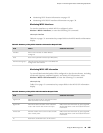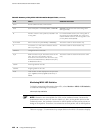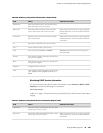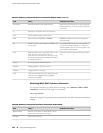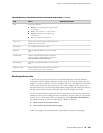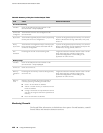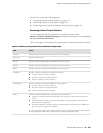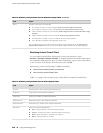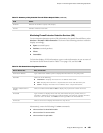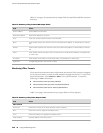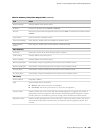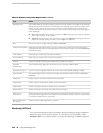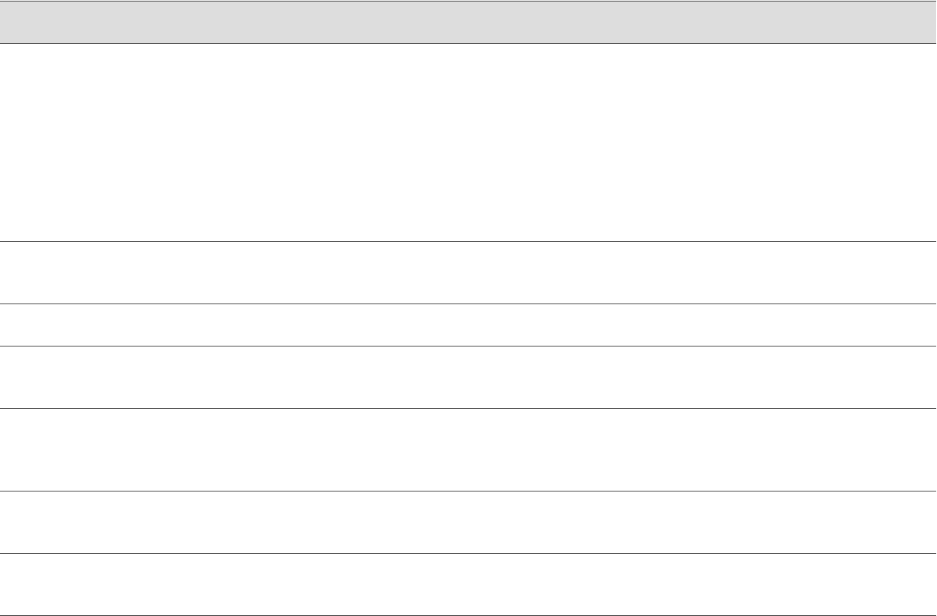
Table 68: Summary of Key RSVP Interfaces Information Output Fields (continued)
Additional InformationValuesField
State of the interface:
■
Disabled—No traffic engineering information
is displayed.
■
Down—The interface is not operational.
■
Enabled—Displays traffic engineering
information.
■
Up—The interface is operational.
State
Number of reservations that are actively reserving
bandwidth on the interface.
Active resv
User-configured subscription factor.Subscription
Total interface bandwidth, in bits per second
(bps).
Static BW
Amount of bandwidth that RSVP is allowed to
reserve, in bits per second (bps). It is equal to
(static bandwidth X subscription factor).
Available BW
Currently reserved bandwidth, in bits per second
(bps).
Reserved BW
Highest bandwidth that has ever been reserved
on this interface, in bits per second (bps).
Highwater mark
Monitoring Service Sets
A service set is a group of rules from a stateful firewall filter, Network Address
Translation (NAT), intrusion detection service (IDS), or IP Security (IPSec) that you
apply to a services interface. You can configure IDS, NAT, and stateful firewall filter
service rules within the same service set. You must configure IPSec services in a
separate service set. For more information about using service sets with these features,
see the J-series Services Router Advanced WAN Access Configuration Guide.
Service set information includes the services interfaces on the Services Router, the
number of services sets configured on the interfaces, and the total CPU used by the
service sets. To view these service set properties, select Monitor>Service Sets in
the J-Web interface, or enter the following CLI show commands:
■
show services service-sets summary
■
show services service-sets memory-usage
Table 69 on page 136 summarizes key output fields in service sets displays.
Using the Monitoring Tools ■ 135
Chapter 7: Monitoring the Router and Routing Operations



